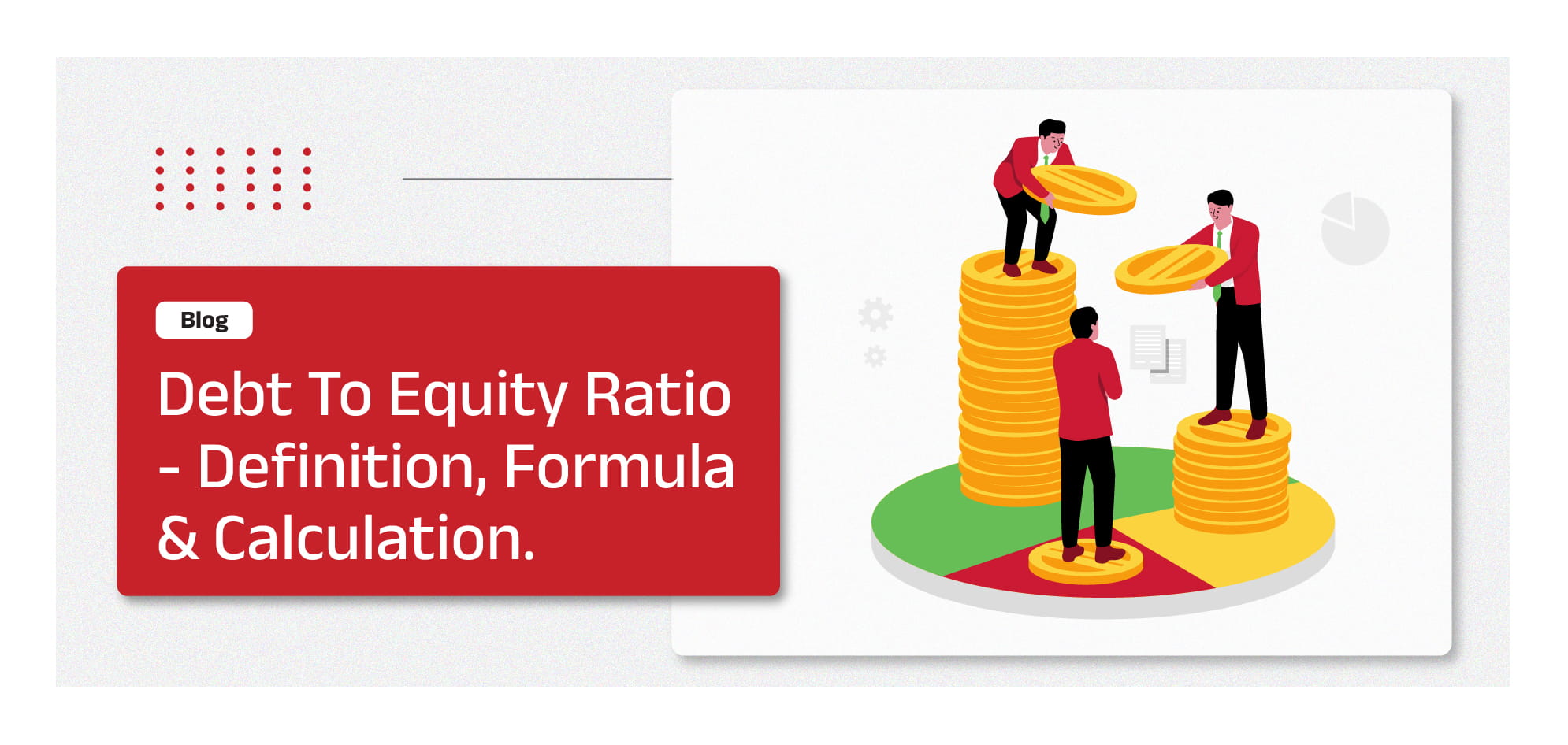-
Our Products
Our FundsFocus Funds
-
Self Care
Self-ServiceFind InformationWays To TransactPartner Solutions
-
Downloads
- Learnings
- About Us
-
More
-
Shareholders
-
Shareholders
-
Updates
-
-
SIP Calculators
- Back
-
Shareholders
Debt to Equity Ratio: Meaning, Formula & Ideal Benchmark for Investors

Aug 14, 2025
5 min
0 Rating
The financial ratios offer a direct way to evaluate a company's stability and risk profile. Among multiple ratios, a crucial one is the debt-to-equity ratio. It sheds light on available liabilities in comparison to shareholders’ equity. This ratio serves as an indicator of the company’s creditworthiness and subsequently assists in decision-making for both investors and lenders.
Are you unfamiliar with this important ratio of the financial world? If yes, here are the insights for your understanding. Read on to learn more.
What is the Debt-to-Equity Ratio?
Debt refers to the money borrowed by the company, and equity refers to the profits earned by the company over time. The Debt to Equity ratio, or (D/E) ratio, is a financial metric of the company. It offers insights into the company’s existing debts and the presence of assets or shareholder equity. The high debt-to-equity ratio is an indicator of poor chances of managing the liabilities and hence the higher financial risk.
Formula and Calculation with Example
The debt-to-equity equation is quite simple. It just requires two values, i.e., debt and equity.
Let’s understand the debt equity ratio formula and calculation with two examples.
Case I: Assuming a company has debt of INR 1200 crore and equity of INR 2400 crore. So, the D/E ratio for the company based on the debt-to-equity formula will be:
D/E ratio = 1200/2400
D/E ratio = 0.5
Case II: Assuming this company takes an additional loan of INR 1800 crore. So, the debt will be INR 3000 crore and equity remains INR 2400 crore. So, the D/E ratio for the company based on the debt-to-equity formula will be:
D/E ratio = 3000/2400
D/E ratio = 1.25
What Does the Ratio Indicate?
Let's understand the meaning of the equity-to-debt ratio from the above examples:
Case I: The company has INR 0.50 for every INR 1 of its own money. It indicates that while the company is using some debt, it is not completely dependent on it. Hence, the company is in a good financial position.
Case II: The company now has INR 1.25 for every INR 1 of its own money. It indicates that the company is highly dependent on debt, thus increasing the risk. Now, if the earnings fall, the company will still have to repay this larger debt.
However, do note that the risk value of the equity-to-debt ratio varies among industries. While some industries commonly have a high debt-to-equity ratio, others commonly have a low D/E ratio as well.
Ideal Debt to Equity Ratio for Companies
The ideal ratio value varies among the industries and may not be a certain value. Yet, if we still consider the value, the ideal D/E ratio is less than 2. This ratio would indicate the two units of debt for each unit of its own money. The D/E ratio of 2 is highly unmanageable and indicates high risk.
This must be understood with the fact that manufacturing and mining industries generally have a D/E ratio of 2 or more. On the other hand, the general D/E ratio of the technology sector is under 0.5. Hence, the industry average can offer better insights into the ideal D/E ratio for companies.
Importance for Investors & Lenders
The debt-to-equity ratio holds importance for investors and lenders by offering insights into the financial status of the company. The low ratio indicates that the company has fewer loans to repay and relies on its own funds. However, the high ratio indicates high reliance on debt, thus increasing financial risk due to repayment obligations and interest costs.
Hence, the importance of the ratio for investors and lenders is as follows:
Investors can evaluate the safety of their investment. They can assess the possibility of returns and risks associated with investing in the company’s stocks or bonds. Companies with a manageable D/E ratio are often a better choice for better investment prospects.
The lenders, like banks, can benefit from this ratio to identify the probability of receiving back the loan. They can evaluate the company’s creditworthiness. A balanced ratio increases the likelihood of loan approval for the company, while a very high ratio may indicate repayment risk.
Limitations of the Ratio
The debt-to-equity ratios hold certain limitations as well. Here are the insights into the same:
The wide variation across industries poses a challenge in comparing the ratio across sectors directly
Lack of standard treatment of preferred stock may skew the ratio
Lacks insights into the company's focus on growth
Does not offer complete insights into the company’s ability to generate cash and repay debt
Conclusion
The debt-to-equity ratio is an essential financial metric that helps understand a company’s financial status. It is helpful for both investors and lenders to consider their investment plans. Although the ratio offers valuable insights, it is worth noting that the debt-to-equity ratio varies across different industries. Also, it has certain other limitations as well. A thorough understanding, coupled with a balanced debt-to-equity ratio, is essential for informed investment decisions.
The sector(s)/stock(s)/issuer(s) mentioned in this Blog do not constitute any research report/recommendation of the same and the Fund may or may not have any future position in these sector(s)/stock(s)/issuer(s).
The information herein is meant only for general reading purposes and the views being expressed only constitute opinions and therefore cannot be considered as guidelines, recommendations or as a professional guide for the readers. The document has been prepared on the basis of publicly available information, internally developed data and other sources believed to be reliable. Recipients of this information are advised to rely on their own analysis, interpretations & investigations. Readers are also advised to seek independent professional advice in order to arrive at an informed investment decision.
Mutual Fund investments are subject to market risks, read all scheme related documents carefully.
In simple terms, the ratio indicates where the company’s dependence lies. It helps evaluate if the company is dependent on equity or debt.
The debt-to-equity ratio equation used to calculate the value is: total liabilities divided by shareholders’ equity.
The debt-to-equity ratio is important for investors because it helps identify a company’s risk profile and financial stability.
The good debt-to-equity ratio is generally less than 2. However, the value depends on the average for the industry with which the company is dealing.
The ETF fund’s full form is Exchange Traded Funds. It is a pooled investment fund that holds a collection of securities and is traded on stock exchanges. ETFs mirror the performance of a specific commodity, index, sector, or asset class.





 1800-270-7000
1800-270-7000



